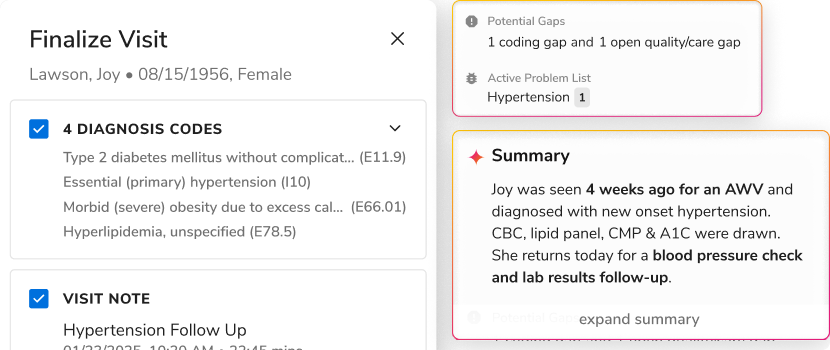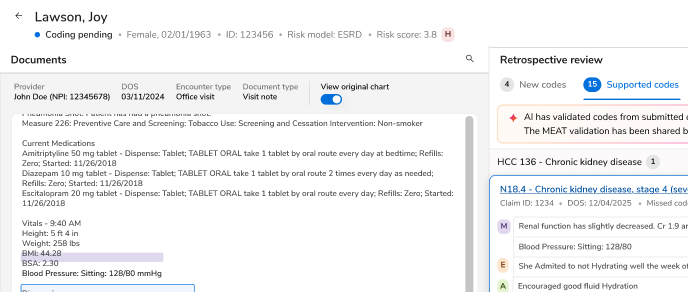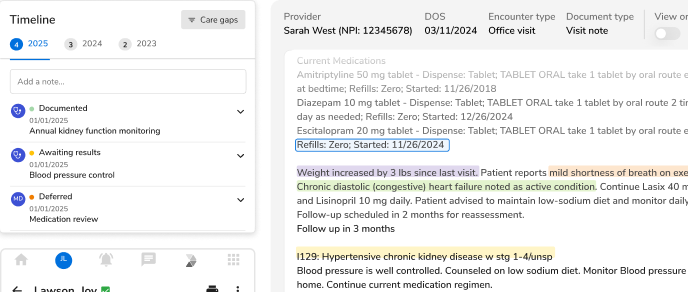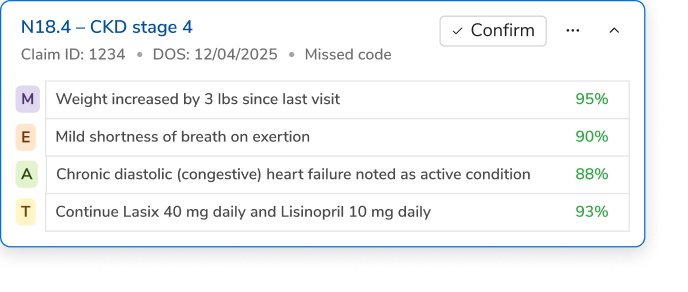Designing the AI-First Data Platform for Tomorrow's Healthcare


The healthcare sector is currently at a crossroads. Although AI technology has the potential to change the way we view patient care, affect costs, and improve outcomes, a prominent gap continues to exist between AI's potential and the actual benefits it delivers in the real world. While billions in capital have been deployed into AI-related initiatives, many health systems struggle to transition away from point solutions and develop into true enterprise transformation activities.
Organizations are increasingly deploying best-of-breed AI point solutions, such as tools for documenting clinical interactions, running population health analytics, or modeling predictive analytics. However, while these various point solutions promise certain progress, they still struggle due to old issues: data is still siloed across systems, integration cost increases with more AI vendors, and security risks increase as technology stacks become more complex.
Simply put, the challenge isn’t either AI algorithm sophistication or access to healthcare data. The challenge is the mismatch between what AI needs versus the fragmented infrastructure approach that most healthcare organizations have taken. To bridge the gap and accelerate enterprise AI transformation, healthcare organizations will need unified platforms, such as Innovaccer’s Gravity, which is designed from the ground up to support AI use cases, healthcare context, and seamless integration through in-built API Connectors as fundamental architectural principles.
The Foundation Crisis: Why Traditional Data Platforms Fall Short
Traditional healthcare data platforms were built for reporting and compliance, not for AI. They create data silos, inconsistent formats, and processing delays that make real-time AI applications nearly impossible. When healthcare organizations attempt to bolt AI solutions onto legacy data architectures, they encounter familiar issues like:
- Bottlenecks with Data Quality: AI models are only as good as the data they ingest. Legacy data systems often have incomplete records, inconsistent coding, and quality problems that all limit the reliability of AI and the utility of its findings.
- Integration Difficulty: Each AI application will necessitate custom integrations with multiple source systems, creating a tangled web of technical debt that is increasingly difficult to manage and maintain.
- Scalability Barriers: While point AI solutions may address specific use cases, they often can’t scale to support enterprise-wide implementation without an integrated, unified data architecture designed to support AI workloads.
- Real-Time Analytics: The modern AI healthcare application stack from clinical decision support to population health management is designed to operate in real time, often requiring far more than legacy systems can batch process.
The Three-Pillar Approach to Healthcare AI Platform Success
Healthcare organizations that develop successful AI scaling capability across their enterprise comprise three foundational capabilities that work in cohesion to drive transformative change.
The first pillar is to pull together fragmented healthcare data into a single, holistic foundation. Instead of managing the proliferation of data warehouses, data lakes, and data marts across different departments, they bring data into a single repository that includes clinical data from EHRs, claims data from payers, social determinants data, and real-time streams from connected devices. By creating a single data foundation, they triangulate the data silos that prohibit AI models from accessing the connected patient data foundation for creating accurate insights.
The second pillar is enabling easy connectivity with existing core systems to emerging AI point solutions. Historically, each implementation of an AI solution has resulted in yet another silo of resources, knowledge, and effort that creates an unnecessary tax on resource utilization. Successful platforms provide powerful integration capabilities that allow organizations to keep their existing technology investments while layering AI capabilities. This connected architecture minimizes integration costs and vendor lock-in, while creating an overall more secure technology environment to manage.
The third pillar is leveraging pre-built workflows, copilots, and intelligent agents that are purpose-built for healthcare use cases. Healthcare organizations do not want to build AI capabilities from scratch. They want to deploy pre-vetted solutions with workflows that integrate right into their clinical workflows, population health program, and operational processes.
This three-pillar approach is what Innovaccer’s Gravity is based on.
Why Innovaccer’s Gravity Outperforms Generic Platforms
While horizontal AI platforms and generic data solutions exist across industries, healthcare requires purpose-built capabilities that understand the unique complexities of patient care, regulatory requirements, and clinical workflows. Generic platforms often slow down healthcare organizations rather than accelerating their AI initiatives. Here’s how Gravity is different from generic solutions:

Envisioning the Future with Unified AI Platforms
Healthcare organizations that leverage AI platforms that can serve multiple use cases (for example Innovaccer's Gravity) will have important competitive advantages in the future. By bringing data, AI capabilities, and the context of healthcare together in one platform, organizations will be able to react faster to population health needs, provide greater personalization for each patient, and become more efficient in an increasingly complex regulatory and financial environment.
The shift in thinking would entail moving from the fragmented approach of utilizing multiple AI point solutions to platforms that accelerate an enterprise AI initiative through a unified dataset, connected systems, and purpose-built healthcare AI capabilities. Organizations that embrace a unified AI strategy today will realize the benefits of pioneering AI capabilities as they become available, whereas organizations that continue to manage point solutions as independent and separate options will find themselves at a disadvantage.
The future of healthcare will belong to those organizations that understand that AI platforms are not just technology investments, rather these platforms are the strategic investment to foster integrated, intelligent care delivery: the future sources of competitive advantage moving forward.

.png)





.png)









.svg)


.svg)

.svg)

